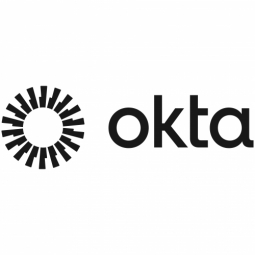公司规模
Large Corporate
国家
- Other
产品
- Workforce Identity Cloud
- Okta Workflows
- Okta Integration Network (OIN)
- Universal Directory
- Lifecycle Management
技术栈
- Single Sign-On (SSO)
- Multi-Factor Authentication (MFA)
- SAP SuccessFactors
- Okta Verify
实施规模
- Enterprise-wide Deployment
影响指标
- Productivity Improvements
- Customer Satisfaction
- Employee Satisfaction
技术
- 网络安全和隐私 - 身份认证管理
- 平台即服务 (PaaS) - 连接平台
- 应用基础设施与中间件 - API 集成与管理
适用行业
- 零售
适用功能
- 人力资源
- 商业运营
服务
- 系统集成
- 软件设计与工程服务
- 培训
关于客户
Sephora is a global omnichannel prestige beauty retailer with a presence in 36 countries and over 2,700 stores. The company employs 36,000 people worldwide and is known for offering a wide range of beauty products, including cosmetics, skincare, and fragrances. As a large corporate entity, Sephora operates in the retail industry and is committed to providing a seamless shopping experience for its customers. The company has been focusing on enhancing its human resources management systems to improve operational efficiency and employee satisfaction.
挑战
Sephora faced challenges with its human resources management systems, which were previously siloed and made it difficult to centralize HR information. The company needed a streamlined solution to validate team member identity and automate operational processes. Additionally, Sephora had to address the lack of standardized HR processes due to different local regulations in each country. This required a flexible solution that could develop customized processes to meet local legal requirements and quickly adapt to changes.
解决方案
Sephora implemented Okta's identity management solutions, including Workforce Identity Cloud, Okta Workflows, and the Okta Integration Network (OIN), to streamline its HR processes. By integrating these solutions with SAP SuccessFactors, Sephora was able to automate account creation and removal, reducing risk and improving the user experience. The implementation was carried out in collaboration with Okta partner Lyvoc, which provided expertise in both Okta and HRMS management. The solution allowed Sephora to develop customized processes that meet local legal requirements and automate identity management on a large scale. With Single Sign-On (SSO) and Multi-Factor Authentication (MFA), Sephora team members now have quick, secure access to over 100 Okta-integrated applications, enhancing productivity and reducing manual processes.
运营影响
数量效益

Case Study missing?
Start adding your own!
Register with your work email and create a new case study profile for your business.
相关案例.

Case Study
Improving Production Line Efficiency with Ethernet Micro RTU Controller
Moxa was asked to provide a connectivity solution for one of the world's leading cosmetics companies. This multinational corporation, with retail presence in 130 countries, 23 global braches, and over 66,000 employees, sought to improve the efficiency of their production process by migrating from manual monitoring to an automatic productivity monitoring system. The production line was being monitored by ABB Real-TPI, a factory information system that offers data collection and analysis to improve plant efficiency. Due to software limitations, the customer needed an OPC server and a corresponding I/O solution to collect data from additional sensor devices for the Real-TPI system. The goal is to enable the factory information system to more thoroughly collect data from every corner of the production line. This will improve its ability to measure Overall Equipment Effectiveness (OEE) and translate into increased production efficiencies. System Requirements • Instant status updates while still consuming minimal bandwidth to relieve strain on limited factory networks • Interoperable with ABB Real-TPI • Small form factor appropriate for deployment where space is scarce • Remote software management and configuration to simplify operations

Case Study
Digital Retail Security Solutions
Sennco wanted to help its retail customers increase sales and profits by developing an innovative alarm system as opposed to conventional connected alarms that are permanently tethered to display products. These traditional security systems were cumbersome and intrusive to the customer shopping experience. Additionally, they provided no useful data or analytics.

Case Study
How Sirqul’s IoT Platform is Crafting Carrefour’s New In-Store Experiences
Carrefour Taiwan’s goal is to be completely digital by end of 2018. Out-dated manual methods for analysis and assumptions limited Carrefour’s ability to change the customer experience and were void of real-time decision-making capabilities. Rather than relying solely on sales data, assumptions, and disparate systems, Carrefour Taiwan’s CEO led an initiative to find a connected IoT solution that could give the team the ability to make real-time changes and more informed decisions. Prior to implementing, Carrefour struggled to address their conversion rates and did not have the proper insights into the customer decision-making process nor how to make an immediate impact without losing customer confidence.

Case Study
Ensures Cold Milk in Your Supermarket
As of 2014, AK-Centralen has over 1,500 Danish supermarkets equipped, and utilizes 16 operators, and is open 24 hours a day, 365 days a year. AK-Centralen needed the ability to monitor the cooling alarms from around the country, 24 hours a day, 365 days a year. Each and every time the door to a milk cooler or a freezer does not close properly, an alarm goes off on a computer screen in a control building in southwestern Odense. This type of alarm will go off approximately 140,000 times per year, equating to roughly 400 alarms in a 24-hour period. Should an alarm go off, then there is only a limited amount of time to act before dairy products or frozen pizza must be disposed of, and this type of waste can quickly start to cost a supermarket a great deal of money.

Case Study
Supermarket Energy Savings
The client had previously deployed a one-meter-per-store monitoring program. Given the manner in which energy consumption changes with external temperature, hour of the day, day of week and month of year, a single meter solution lacked the ability to detect the difference between a true problem and a changing store environment. Most importantly, a single meter solution could never identify root cause of energy consumption changes. This approach never reduced the number of truck-rolls or man-hours required to find and resolve issues.








